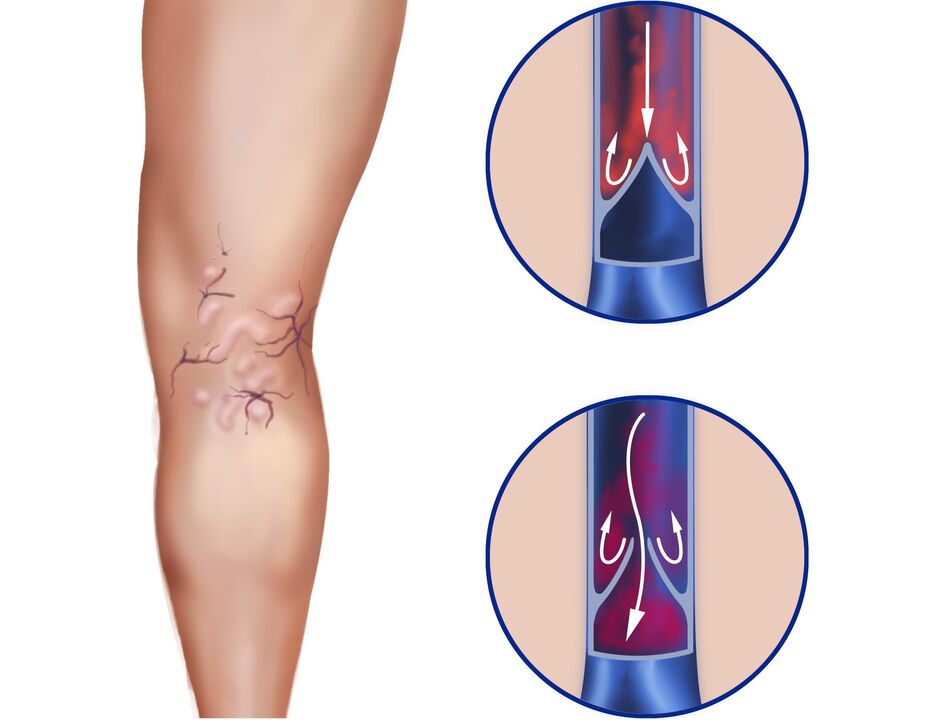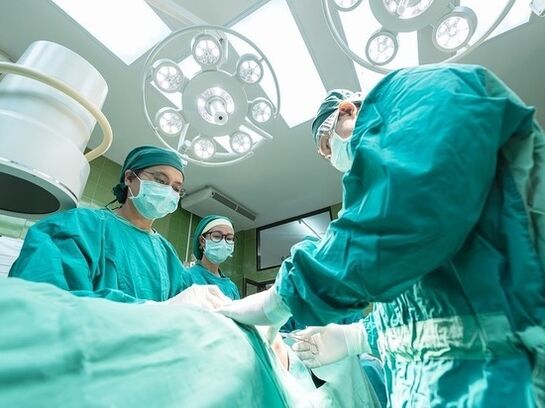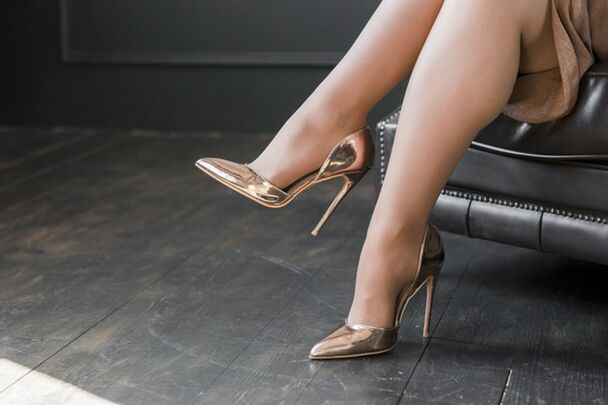Varicosis of the lower limbs or lower limbs, with the expansion of the surface veins, valve failure and damaged blood flow.
This is the most common disease of peripheral blood vessels.According to epidemiological data, various forms of this disease are found in 26-28% of women and 10-20% of men of working age.
The risk factors of the formation of varicos
Inheritance and its role in the formation of varicose veins do not find clear confirmation.One of the main counter -arguments for the presence of genetic predisposition is the different frequency of varicose disease in ethnic Africans and their peers, who emigrated to the United States and Western euro.In addition, compared to the sitting strains, the frequency of varicos, which does not exceed 0.5%, is 10-20%of emigrants' reliable incidence.In this respect, the conclusion is obvious on the disease disease, lifestyle and nutritional characteristics.
PregnancyTraditionally, it is considered one of the main risk factors of varicose veins, especially as a more common (3-4 times) damage to women.It is generally accepted that the main provocative moments are the compression of BCC (circulating blood) and the pregnant uterus of the retroperitoneal veins.Meanwhile, the results of epidemiological studies show that only second and subsequent pregnancies will lead to 20-30%reliable growth in the frequency of varicos.However, the first signs of the disease are already in the first trimester of pregnancy, when the sudden increase in BCC or the growth of pregnant uterus is not yet possible.
Obesity- a proven risk factor for varicos.At the same time, the growth of body weight index to 27 kg/m2 and above will lead to an increase of the disease by 33%.
In industrialized countries, the high frequency of varicos is to some extent due to nutritional characteristics.High degrees of food processing and reducing the diet of raw vegetables and fruits led to a constant deficiency of the vegetable fibers needed to convert the venous wall and chronic constipation, which cause long -term growth in intraabdominal pressure.
LifeIt has a significant impact on the development and course of varicose veins.In particular, the harmful effects of long -term static loads with lifting weights, or still in a standing position and sitting are in position.In Asian countries, the more frequent use of chairs and chairs in Europeans has led to a reliable (3-4 times) growth of varicos in Europe than in people who have traditionally been sitting in carpets.
Special conditionsParticipate in the pathogenesis of the varicos.Their role in recent years has gradually increased, which is due to a wide range of hormonal contraception devices during the treatment of osteoporosis due to the promotion of hormone replacement therapy.It has been proven that estrogens and progesterone and their derivatives reduce the sound of the venous wall due to gradual destruction of collagen and elastic fibers.
The clinical picture of the varicosus
A varicos is a disease that is not indifferent to the beautiful gender.On average, the varicose veins of the female veins are three times more often ill than men.

Signs of varicoosis are the knotted extensions of the subcutaneous veins, pain, severity in the legs, leg swelling and lower legs, the fatigue of the legs at the end of the sun.Varicosis nodes are often prone to the formation of blood clots and infection.Flebitis can develop - inflammation of the blood vessels or thromboflebitis - inflammation of the blood vessels is complicated by blood vessels.Veins have difficult, very painful cords.The skin changes, loses elasticity and becomes dense, dark brown.In case of minor injuries, ulcers occur.At the age of 40, a young woman can become disabled.
These symptoms should be warned - these are the symptoms of varicos:
- Pain.The causes of the varicose pain are very -very -very much.The various pains of varicos are also very rich:
- Hot pulsating pain,
- Night cramps and itching in the muscles,
- Hurts while walking
- Pain along the venous lavish,
- General pain and pain in the legs.
- Swelling in the legs.
- A feeling of blasting and difficulty of legs.
- Changes in the skin.Initially, the skin dries, pigmentation appears - the skin of the legs is darkened with brownish "spots".Later, in the form of various dermatitis, eczema and so -called tropical disorders, in the form of poorly healing wounds, until the ulcers develop, they can join these symptoms.
- It is a winding, elongated varicose veins that stand above the surface of the legs and legs with cylindrical or mixed extensions.
- Vascular stars (Telangioectasia).Yes, people with varicose veins are also included in the group of patients with small veins because the causes of their appearance are the same.
The earliest stages of the formation of varicose veins are very difficult to detect and diagnose, as there is no main feature in the very early stages of the disease - varicos.And the first and earliest symptoms of the veins of the veins, such as the severity of the legs, the moderate pain of the legs, the increased fatigue, the arterial diseases, the flat legs, the lumbar osteochondrosis.
In such difficult cases, it is impossible to consult a correct diagnosis - a doctor or even several professionals - for consultation with a flebologist, neurologist, surgeon and manual therapist.High -precision instrumental diagnostic methods such as ultrasound or flebogography will also be required.
The very first symptoms of the varicose veins of the legs, which may suspect the formation of varicos and an increase in the vein pattern of the skin of the feet.This mistake, as we have already noted, most often the young women noticed that wreaths on the legs or hips are not before.There may be no other complaints at the beginning of the varicos.
And often such symptoms of initial varicose veins prevent pain and other discomfort.The first "finds" of the veins are often not accompanied by no discomfort at all.
The development and progression of varicoosa is already manifested with protrusion above the surface of the skinvaricoos nodes- One or more.This is the main symptom of the initial varicose disease.Varicose nodes are most often detected on the inner surface of the legs or hips.Long walking or longer condition is such a symptom of varicoosasFatigue, difficulty in the legs, feeling of blasting(often - in calves).These symptoms are particularly clear if they are in a longer period of time or in a constant position.There is also a pain or acute pain in the varicose veins (dilated veins), calf muscles, especially in the evening and sometimes at night.
In the veins the first signs of dysfunction show andLegs swelling until the end of the sun- Edema usually occurs in the evening, especially after a longer situation.After the night's rest, the swelling disappears completely.
The symptoms of varicos are initially passed through when they relax, especially when they go to bed.However, the disappearance of symptoms or a significant decrease in the night rest is very characteristic of the symptoms of varicose veins.
But the varicoos, if they are not seriously involved, do not retire,developing- With the passage of time, such symptoms of varicos likeConquered dark blue intradermal blood vessels, protruding above the surface of the legs and legs, similar to red grape groups.All this is accompanied byFilled in the legs and calves with pain, heat sensation of the legs, night cramps of calf muscles, swelling- Gradually join these symptomsskin change- At first, the skin dries, darkens, pigment appears on it - brown spots.A little later on so -calledTrophic disorders: Poorly healing wounds and even ulcers.
PainThey are getting more and more disturbing, especially in the afternoon or evening.
Diagnosis
Currently, the main affordable methods for diagnosing varicose veins are as follows:
- Ultrasound doppleography.The most common method of primary diagnosis of the veins of the lower limbs is today's ultrasonic doppleography.This method is based on the effects of the doppler, which consists of the fact that ultrasound waves passing through tissues are reflected in moving blood cells and changes their frequency.Very sensitive sensors are reproduced by recording these changes in the form of sound signals that resemble the noise of the wind or a graphics curve.
- The duplex (two -dimensional) scan allows you to fix the image of the venous vessel on the monitor screen by evaluating the blood flow.Triplex (three -dimensional) scanning allows you to get a colorful picture of blood flow.
- Fleet.Flebography is a radiopaque test of veins, which in some cases persists and is a decisive diagnostic method for examining patients with veins and primarily in their complications.
Treatment of varicos

Successful solving the problem of handling the varicosity consists of sequential implementation of the following tasks:
- Removal of varicos;
- Eliminating the signs of HVN;
- Preventing the progression and decline of the disease.
Methods of treating varicosas:
- Compression therapy;
- Conservative therapy;
- Surgical treatment (febectomy);
- Sclerotherapy.
Above all, they try to handle varicoosis veins by conservative methods.Strictly, this is not a method of treating varicos.All conservative methods are aimed at the treatment of "varicose veins", first and foremost to prevent the disease and its complications.Conservative methods are also the only possible therapy if the patient has serious contraindications to other treatment methods or if the patient refuses to surgery the varicose veins.The radical elimination of varicose syndrome is only possible through surgery, but the functional result of treatment is of great importance, which means eliminating or minimizing the manifestations of HVN.

The treatment of varicose veins should be complex and individual treatments, most often conservative and surgical.The doctor can only recommend a method of treating varicos veins but the decision will always remain























